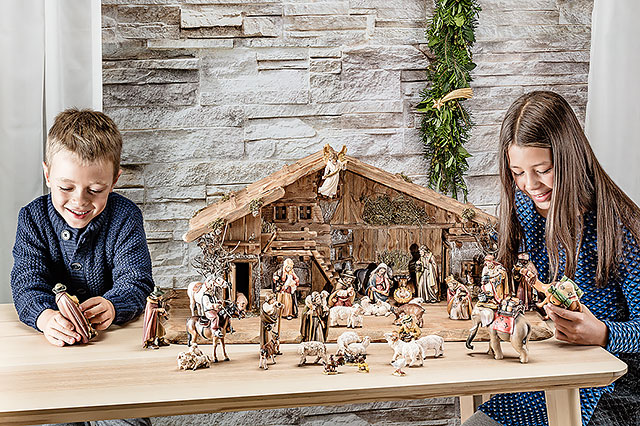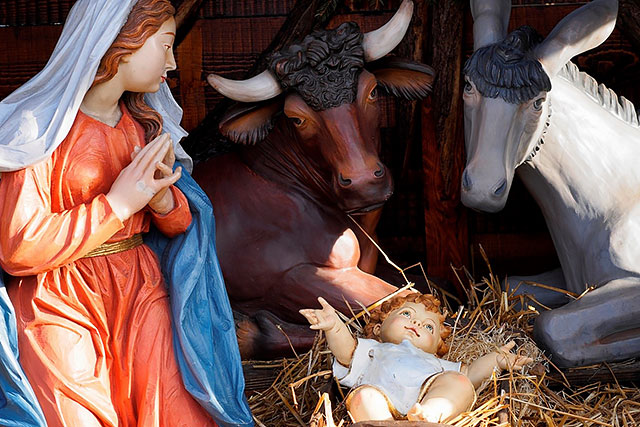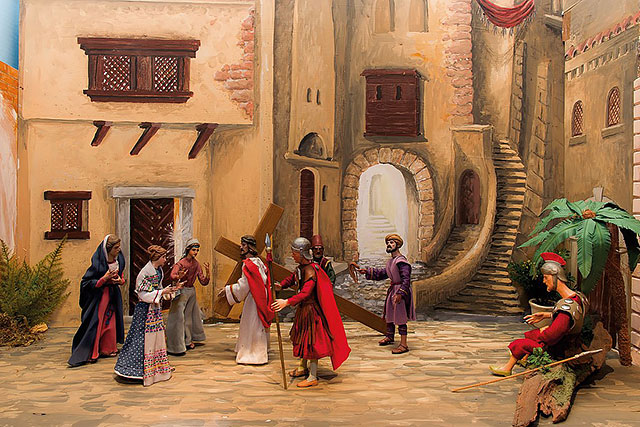Whoever spends a vacation in South Tyrol during the Advent period or has the possibility to spend their vacations there can never get enough of cribs. Numerous hand-carved works of art are on display in churches and stores.
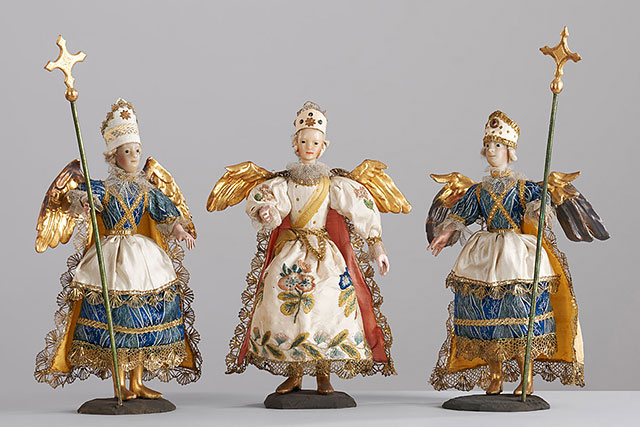
Table of contents
Introduction
In some municipalities there are larger cribs in which the works of artists from the region are presented. In addition, there are dedicated fairs throughout the year in which lovers of artistic crafts and traditional carving art can also participate outside the Advent period. For example, the Brixen Castle Nativity scene and the Maranatha Nativity Museum show their visitors numerous classic and extraordinary nativity scenes.
The crib collection in the Hofburg in Bressanone
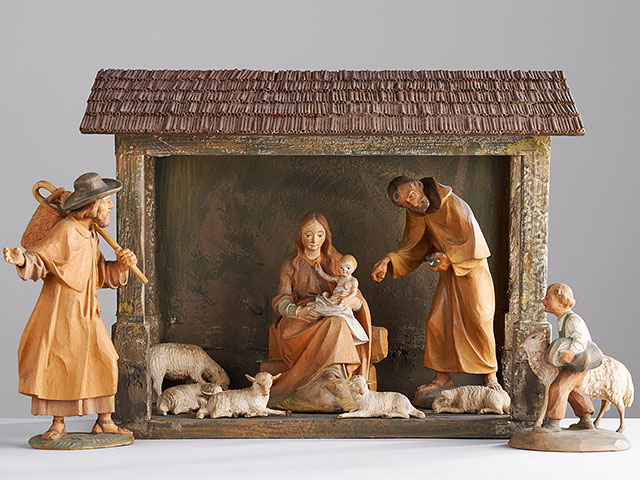 Nativity scene by Alexander Dejaco, 1919 (selection of figures) © Hofburg Brixen
Nativity scene by Alexander Dejaco, 1919 (selection of figures) © Hofburg BrixenThe collection of cribs, which visitors of the Hofburg in Bressanone> can admire, is one of the most important collections of all. The tradition of the crib exhibition dates back to Prince-Bishop Karl Franz Graf Lodron, who commissioned an annual crib at the beginning of the 19th century. The crib of August Alois Probst and Josef Benedikt Probst, composed of more than 5000 subjects, tells the whole life of Jesus. Another highlight of the exhibition are the figures of Nissl. Franz Xaver Nissl's nativity scene has found its place in the castle church.
The collection of cribs has been greatly enriched by donations and purchases. In addition to the classic wooden nativity scenes, visitors can also see ivory nativity scenes, a clay nativity scene and artistic paper nativity scenes. The Hofburg also exhibits modern Christmas cribs such as the common crib of the Rainer family.
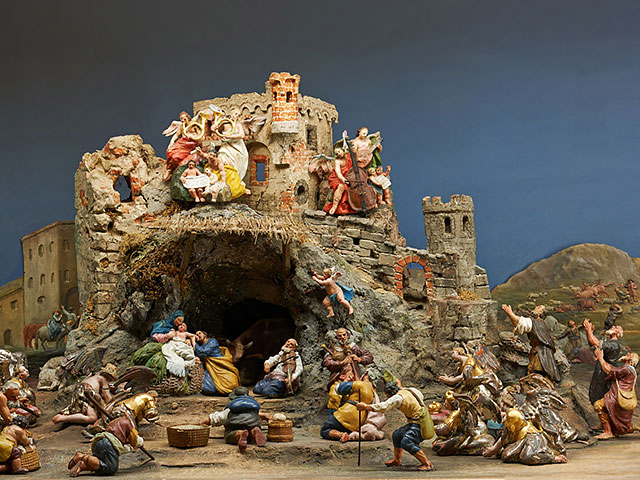 Adoration of the shepherds, from the crib of Augustin Alois and Josef Benedikt Probst, c. 1800. © Hofburg Brixen
Adoration of the shepherds, from the crib of Augustin Alois and Josef Benedikt Probst, c. 1800. © Hofburg BrixenBressanone can be reached via the A22 Brenner freeway. During the winter months, the Hofburg is open to visitors every day from 10:00 a.m. to 5:00 p.m. and longer on weekends before Christmas. The museum of the Hofburg in Bressanone houses not only the collection of cribs, but also numerous art treasures and the treasure of the cathedral of Bressanone with precious and memorabilia, some of which date back to the 10th century.
The Maranatha Nativity Museum
The Maranatha Nativity Museum in Lutago was opened by the Gartner family in 2000. Its name refers to the Aramaic term "Maranatha" which means "our Lord, come". On an area of about 1300 m² there are exhibitions from various countries. Here visitors can admire noble nativity scenes, but also get an insight into the life and work of wood sculptors in the Ahrntal Valley.
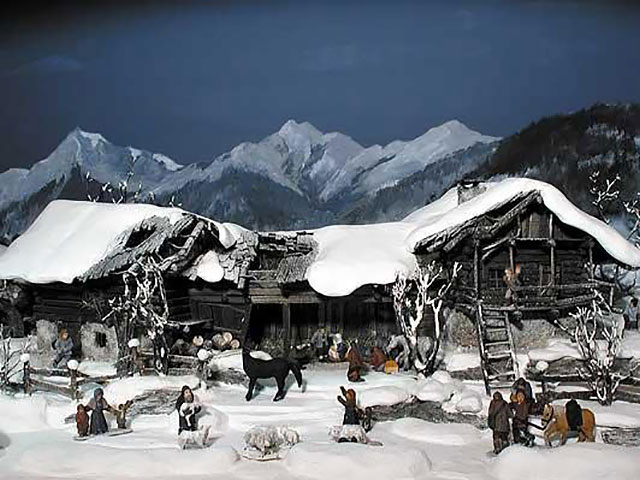 Winter crib
Winter cribThe exhibition includes sculptures of roots, masks and its own modern art studio. Lukas Troi, a sculptor from St. Johann, likes visitors to watch him work. Award-winning nativity scenes from around the world are in a permanent exhibition. Visitors can see the works of artists Bruno Lipp, Leo Demetz and Roberto Cippolone, among others. The special exhibition always offers new cribs and works of art.
The exhibition is open all year round. Visitors can visit it from Monday to Saturday from 9:00 to 12:00 and from 14:00 to 18:00 and on Sundays from 14:00 to 17:00. The Maranatha crib museum is located in Lutago in the Ahrntal Valley. Groups of tourists can register for a guided tour and a special entertainment program.
Museum of Muri-Gries cribs
Even lovers of unusual cribs will find their value in Bolzano: the crib museum in the Benedictine monastery Muri-Gries shows a wide selection of cribs from three centuries on three floors. The museum, opened in 1991, is constantly expanding its collection with donations and presents its exhibits in the special atmosphere of the old tower of the building. One of the main principles of the exhibition is the representation of the religious value of very different cribs. Baroque nativity scenes from the 18th century, as well as modern South Tyrolean nativity scenes, draw attention to the core of the Christmas Gospel which has become pictorial.
It is interesting to note that in Bolzano, in addition to the classic Christmas cribs, there are also Easter and annual cribs on display, which offer some visitors a completely new perspective on the theme of "cribs". The "Lofferer Crib" with its chequered history is considered the highlight of the exhibition. The "Easter Nativity" also touches the viewer deeply: lively figures tell the story of Jesus' passion.
From February to November visitors have the opportunity to view the crib collection on the first Saturday of the month from 3 to 5 pm. Special opening hours during Advent can be found on the museum website. Entrance and guided tours are also possible during the months of July and August and outside opening hours by telephone registration. The museum of Bolzano can be reached via the SS12 or the A22 Brenner-Modena. Due to the limited number of parking spaces, we recommend using public transportation: from the main train station, take line 10B directly to the "Grieser Platz" stop.

